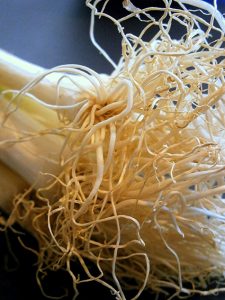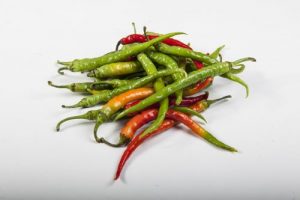You don’t need a lot of space and it needn’t cost you a cent to grow tomatoes, lettuce, bok choy… and a bunch of other stuff at home. Diony Lalieu gives the how and why
First published by Ocean Pledge
Lockdown has changed the way we look at the world. The odd empty spaces on supermarket shelves and the high prices being asked for some products prompts us to ask some questions about the basics: food, health, security and shelter.
And rightfully so. Before Coronavirus we had grown used to outsourcing almost everything, from child-care, to waste removal to even the peeling and chopping of our veg.
We had been living such detached lives.
We buy too much; throw away too readily. We generate mountains of waste. In the process we’ve lost some trust in our own ability to nurture or feed ourselves. We forget that Mother Nature looks after us and has the capacity to ensure abundance.
Let’s look at some simple techniques to grow food from scraps we would otherwise throw away. Growing our own veg helps us save money (let’s face it, who doesn’t like something for free?) and it makes us more self-sufficient.
And in these times of crisis, it brings great peace of mind to know we can tap into an organic food supply, keeping our families healthy and nourished.
No space for a vegetable garden? No worries!
Most of the techniques shown here work in confined, smaller spaces.
Remember, you don’t need to fear going without during lockdown if you learn to trust in nature’s abundance.
Planting a veggie garden is the alchemy nature intended. It’s a fun and free way for us to physically reconnect with nature and become “woke” to the (re)cyclical abundance that She provides.

1. Lettuce, bok choy can be grown from its base
Time: 6 weeks – 2 months
Garden required: No. Can easily be propagated in 10-inch pots
Nutrition:
There is nothing like picking chemical-free, healthy lettuce fresh from your own garden. Lettuce contains plenty of immune-boosting benefits and antioxidants which help fight against cancer. It contains calcium, iron, magnesium, potassium, zinc and several vitamins including vitamins A, B, C and folate.
Being slightly darker, bok choy (Chinese cabbage) has an even greater concentration of such nutrients. But added to that is the only plant that contains the powerful antioxidant, selenium. Along with boosting immunity, selenium minimizes the risk of cancer, tumour growth, mental decline and thyroid function.
How to:
Place leftover lettuce stump into a small amount of water and in full sunlight. After 3-4 days, roots will begin to appear from the base, and after time new leaves begin to regrow. Make sure to mist these every few days. Once the new leaves have regrown for a few days you can transfer the stumps to the soil. The best thing about lettuce is how fast it grows. Once you see about 4-5 leaves, you can start to harvest for your fresh garden salad. After about two months, you can cut off the head of the lettuce leaving the base to continue to grow.

2. Tomatoes can be sprouted from slices
Time: 20-30 days
Garden required: No. Can be propagated in 10-inch pots
Nutrition:
Tomatoes are rich in antioxidants and vitamins (C and K), potassium and folate. They are great for skin and hair and are known to reduce the risk of heart disease and cancer. Tomatoes even assist in repairing damage caused by smoking.
How to:
Use 2cm thick slices from any overripe or discarded tomatoes. Cherry tomatoes are particularly fast to grow. Plant these at the top of your pot, under a fine layer of soil which is kept moist and in sunlight. Space the slices out to about 3 or 4 slices per pot. Seeds should germinate within 7-14 days. Please note – some tomatoes are sterile. Even though you get plants, they might never grow into fruit. You will need to experiment. The seeds from organic tomatoes are more likely to grow fruit. – Tutorial from Urban Gardening

3. Potatoes grow abundantly in various containers
Time: 3 months
Garden required: No, deep containers will also do
Nutrition:
Potatoes are often an underrated source of nutrition. Moreover, they are economical, grow abundantly, and are the yummiest roasted treat. Containing a variety of vitamins and minerals, potatoes are great for immunity, metabolism, bone and heart health, and even guard against halitosis.
How to:
When left alone, potatoes cannot help but start growing. All you need to do is to provide them with a nourishing environment to keep doing so. Leave some potatoes in a dark cupboard until they grow some ‘eyes’. Replant a potato containing at least 2-3 eyes, near the bottom of the pot/container with the eyes facing upwards, covering it with about 4cm into good quality soil in a good light.
Within a few weeks, you will see the potato plant beginning to grow through the soil. Cover it with yet another 4cm layer of soil. Keep doing this as the plant grows (keeping it consistently but not overwatered) until you have filled the container to the top with soil.
Usually, it is time to harvest after the plant has flowered and died away. Dig your fingers into the soil to test their size, before gently pulling them out of the ground. Apparently, you can replant potatoes using only some peels (with at least 2/3 eyes per peel facing upward). However, using only the peels does take a whole lot longer.
The cool thing is that potatoes can be grown in so many different ways. You definitely don’t need a garden.

4. Sweet Potatoes do require a garden
Time: 2 months for spouting, then a further 2-3 months to nurture in the soil
Garden required: Yes. This needs ground
Nutrition:
Although touted as healthier than regular potatoes, both sweet and regular potatoes provide similar health benefits: Highly nutritious, promotes gut health, contains antioxidants, supports healthy vision and brain functioning.
How to:
Growing sweet potatoes are slightly different to potatoes in that you need to sprout them first. Planting a whole sweet potato directly into the ground will give you nothing other than green shoots. To begin, start by cutting the sweet potato in half. Then using toothpicks, place half the sweet potato in a container of water with the blunt side facing down.
Within a few days, roots should appear along with sprouts along the top. When the sprouts are at least 4 inches long twist them off and place them along with their roots into the ground. Alternatively, once the roots are about 4 inches you can transplant the potato into the soil allowing about 12 inches between them. It takes about 4-6 months to grow.

5. Onions grow easily from small cuttings
Time: 20-30 days
Garden required: No. And can be grown indoors or outdoors
Nutrition:
Onions are packed with nutrients and antioxidants, which promote health in numerous ways. They are praised for their strong antibacterial properties which makes them great for earache, sore throats, and even cleaning metal surfaces. Onions also help to absorb bad odours and even promote hair growth. Their uses are endless.
How to:
Onions are the easiest thing in the world to plant. Cut the bottom of the onion including at least ½ an inch of the bulb and its root end. Place the root of the onion in a shallow bowl of water (or directly into some potting soil) and within a few days, you will see the roots lengthen and possibly even green shoots starting to grow.
Plant root-down into the soil with the top exposed. Cover lightly with potting soil and place in a sunny area. Any type of pot or garden will do. Keep the soil moist. If you keep cutting the sprouts off the onion as they grow the bulbs will thicken. If you do this every time you use an onion you will never need to purchase onions again!

6. Ginger sections can regrow an entire root
Time: 8-10 months
Garden required: No. Can be grown indoors or outdoors
Nutrition:
In Ayurvedic texts, ginger is known as the ‘Universal Great Medicine’. Ginger is an antioxidant high in anti-inflammatory properties. It boosts immunity, reduces nausea, and helps to stabilise blood pressure.
How to:
Place a spare yet plump piece of ginger on your counter and wait until a green eye or bud appears. Then plant into potting soil (in a pot or in the ground) ensuring that the bud/eye is facing upwards, no deeper than an inch but also not exposed as then it will dry out.
Plant in a shady area. It can grow for years in a pot, producing striking blooms. New shoots and new roots will appear in around a week, but it takes around 10 months to mature. At this point, you can gently pull out one of the roots and replant the rest to use again. The leaves of a ginger plant are also great to use in the same flavourful way that you would use chives or onions.

7. Garlic can be grown whole from single cloves
Time: 8-9 months
Garden required: No. Can be grown indoors or outdoors
Nutrition:
Its natural immune-boosting properties makes garlic the perfect superfood in times of Covid-19. It is high in antioxidants and packed with vitamins such as manganese, vitamin B6, vitamin C, selenium, calcium, and potassium.
How to:
Pull off one clove of garlic and plant it, no deeper than an inch, with the root facing down into the potting soil. It doesn’t need too much water so only water when the soil feels dry. It can be planted partly in shade. Once you notice new shoots appear, you can use some of the shoots for flavouring, but not all. Remove any flowers to ensure the energy goes into growing the bulb. The growth of about 5 to 6 leaves indicates that garlic is ready to ‘harvest’. Stop watering about two weeks before harvesting.

8. Spring onion, leeks, lemongrass easily grow from cuttings
Time: 10 days to 2 weeks can put you on course for a lifetime supply
Garden required: No. Easily grown in containers
How to:
Instead of discarding the cut-offs from leeks or spring-onion, you can regrow a lifetime’s supply with little effort. Cut the bottom white bit of the leek/spring onion with the roots attached, so there is about an inch of white stem. Using toothpicks, submerge the roots in a glass of shallow water and place on your windowsill. It takes a few days to start noticing the growth of new green shoots and more roots developing. At this stage you can plant the roots end into soil, cutting the leaves as and when you need them and leaving the roots to grow indefinitely. Or else you can leave them on your windowsill, ensuring a fresh supply of water, to cut and regrow. However, in this way, the plant does diminish over time.

9. Peppers and chillies – the seeds from overripe fruit do the trick
Time: 60 days/ 2-and-a-half months
Garden required: No. Easily grown in containers
Nutrition:
Chillies are loaded with vitamins and minerals
- Vitamin C. Chili peppers are high in this powerful antioxidant, which is important for wound healing and immune function.
- Vitamin B6. A family of B vitamins, B6 plays a role in energy metabolism.
- Vitamin K1. Vitamin K1 is essential for blood clotting and healthy bones and kidneys.
- Potassium. An essential dietary mineral that serves a variety of functions, potassium may reduce your risk of heart disease.
- Copper. Often lacking in the Western diet, copper is an essential trace element, important for strong bones and healthy neurons.
- Vitamin A. Red chilli peppers are high in beta carotene, which your body converts into vitamin A.
How to:
Keep the seeds from any chillies or peppers you have. Plant in potting soil and keep in direct sunlight. Grows relatively quickly and doesn’t need too much TLC. Remember to save the seedlings from the new crop to grow again.

10. Herbs from cuttings
How to
Make sure you have about 2-3 inches of the plant’s stem including its leaves. Place the stem in a glass of room-temperature water. Within about 4 weeks you should notice the appearance of roots. Once the roots begin to flourish and are quite established, you can transplant into potting soil. The woodier stems, for example thyme, may take a bit longer to grow roots.
TIPS:
Organic produce gives the best regrow results.
In Cape Town, Urban Farmer deliver organic produce – 082 955 7360.
Use good quality composting soil with an organic fertiliser where possible
If you have no pots, you can use discarded PET cold drink bottles to make cool self-watering planters.

More about the writer – Diony Lalieu
Roving Reporters’ Cape Town correspondent, Diony Lalieu, is a research psychologist, writer and founder of Ocean Pledge. A mother of two young girls who are set to inherit our planet, she is passionate about imparting a positive and trusting outlook for a better future. After losing her position as a consultant due to the onset of Covid-19, Diony was motivated to look at new ways of being during lockdown in South Africa. Through a bit of experimentation she was inspired by the abundant and giving ways of Mother Nature. She wishes to share her new insights in a way that is relevant and empowering to fellow South Africans.
Now read… A lot on our plate: Why the way we farm and eat must change
Click on the image below to read more stories in our series of Coronavirus Chronicles










